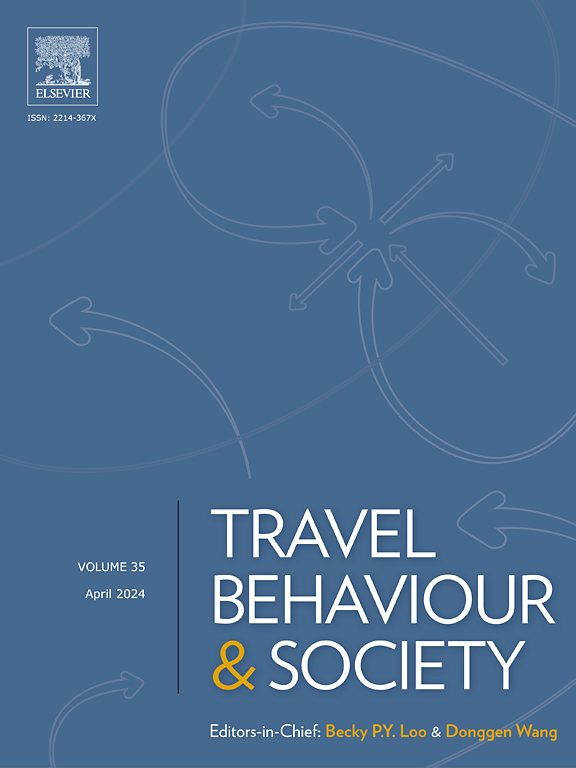A latent class dynamic discrete choice model for travel behaviour and scheduling
IF 5.1
2区 工程技术
Q1 TRANSPORTATION
引用次数: 0
Abstract
In travel behaviour modelling, latent class models are used to represent underlying discrete groupings of behavioural preferences. The paper presents a latent class extension of a dynamic discrete choice model (DDCM) and applies the model to the problem of activity demand generation and scheduling. The DDCM is a recursive multinomial logit model where agents make sequential decisions in time, maximizing the expected future utility of their decisions in a random utility maximization framework. It generates activities and their associated travel within a full day schedule, endogenously respecting agents’ inherent time-space constraints. The latent class DDCM builds on the base model by representing heterogeneous lifestyle preferences. A specification of the model is estimated on a Stockholm travel survey and uses age, income level, gender, car ownership and presence of children in the household as classifying variables. The models result in classes which primarily represent modality styles, finding car-, transit- and bike-primary behavioural groups as well as a multimodal group, each linked with different socio-demographic characteristics. The models improve over non-latent class reference models and provide insight into the structure of heterogeneity in travel behaviour preferences in Stockholm.
出行行为与调度的潜在类动态离散选择模型
在旅行行为建模中,潜在类别模型用于表示行为偏好的潜在离散分组。提出了动态离散选择模型(DDCM)的潜在类扩展,并将该模型应用于活动需求生成和调度问题。DDCM是一个递归多项式逻辑模型,其中代理及时做出顺序决策,在随机效用最大化框架中最大化其决策的预期未来效用。它在一整天的时间表内生成活动及其相关的旅行,内生地尊重代理固有的时间空间约束。潜在类DDCM通过表示异质生活方式偏好建立在基本模型的基础上。该模型的规格是根据斯德哥尔摩旅行调查估计的,并使用年龄、收入水平、性别、汽车所有权和家庭中是否有儿童作为分类变量。这些模型产生了主要代表交通方式风格的类别,找到了以汽车、交通和自行车为主要行为方式的群体,以及一个多模式群体,每个群体都与不同的社会人口特征相关联。该模型对非潜在阶层参考模型进行了改进,并提供了对斯德哥尔摩旅游行为偏好异质性结构的洞察。
本文章由计算机程序翻译,如有差异,请以英文原文为准。
求助全文
约1分钟内获得全文
求助全文
来源期刊

Travel Behaviour and Society
TRANSPORTATION-
CiteScore
9.80
自引率
7.70%
发文量
109
期刊介绍:
Travel Behaviour and Society is an interdisciplinary journal publishing high-quality original papers which report leading edge research in theories, methodologies and applications concerning transportation issues and challenges which involve the social and spatial dimensions. In particular, it provides a discussion forum for major research in travel behaviour, transportation infrastructure, transportation and environmental issues, mobility and social sustainability, transportation geographic information systems (TGIS), transportation and quality of life, transportation data collection and analysis, etc.
 求助内容:
求助内容: 应助结果提醒方式:
应助结果提醒方式:


